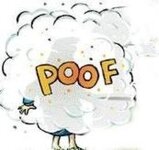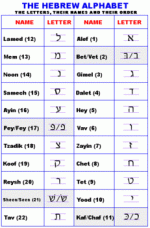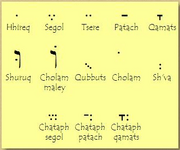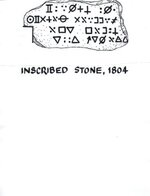In my recently published website Cosmic Order of Tarot, I’ve been decoding the Oak Island mystery from the clues left on the Island. In my first Oak Island Decoding page, I run three clue-based bearings from Oak Island to the Hill of Tara, Ireland, and Scone Abbey, Scotland, which are the two sacred sites for the Stones of Destiny, and the third bearing takes you to the Temple Mount. I translate the inscribed Oak Island Stone by words, numbers, and symbols and use the boulder-outlined cross, known as the Noland’s Cross, together for most of the translation, and then later include the surveyed Stone Triangle for the location of a purported treasure in my Treasure Diagram.
I know you’re coming into the last webpage of this decoding for the code writer’s name, but you’ll be able to follow along with this excerpt from my Whodunit page. To decode the code writer’s name, I’ll your draw your attention back to the Oak Island inscribed Stone's first two symbols in Line 1, ∇∇, and the first five symbols in Line 2, I∴CC∴, which translated into IALLA on the Stone’s Message page.
In the Stone's Numbers page, the first symbol group in Line 1 add up to 360 and in Line 2 add up to 80 or the Greek letter for pi; I read this as a connection between these groups. In sigla, scribal abbreviations, used by medieval scribes writing in Latin and later Greek and Old Norse, a line over a letter meant an abbreviation, so the W or double U means his initials are UU. Under "Marks with independent meaning" in the scribal abbreviation page, the line over a letter also means a missing m or n. With these facts in mind, let's look for the Medieval Gaelic name Uilliam Uallas. Here he demands mirror images, as he has done previously. The slashes on the second ∇ are telling you to mark out a letter when necessary. So for Uilliam, the U–IALLA requires you to mark out the first A and add the mirror image of I for ILLIA and then from the scribal abbreviation requires you to add the missing "m" for Uilliam. The same goes for Uallas; U–IALLA requires you to mark out the I for the mirror image ALLA and add the S from the slash that we discovered early on in the Stars Diagram page for the word Sword. Therefore, Uilliam Uallas left something at Oak Island. Now let's translate his name into English:
Absurd you say! Well, let's find out. Wallace was not only a great war strategist and warrior but a well read and accomplished scholar in his own right and known to have spoken seven to eight languages: Greek, Latin, French, German, Gaelic, English, Italian, and some say Spanish. His command of various languages made him an excellent military leader for his ability to speak with men from all different countries and cultures.
Wallace suddenly appears in the history books in May of 1297 when he assassinates an English High Sheriff in Lanark, Scotland. However, little is known about his life before 1297. Four months later, he is victorious at the Battle of Stirling Bridge during the First Scottish War of Independence. After his victory in September of 1297 at Stirling, William Wallace wrote a letter in Latin now called the "Lubeck Letter" that freed the ports of Scotland for commerce. He signed it stating his father’s name was Alan, not Malcolm as previously believed. Wallace’s personal seal was a Scottish lion rampant on the front and a strung bow with an arrow on the reverse side. This corroborates with the limestone lion's head at the center of the sword/cross known as Nolan’s Cross today, the arrow being shot from the Stars Diagram, and the distinction of his famous sword. OK, now let's readdress the IALLA code, and use the two slashes to mark out two letters and add a missing "n" for his father's name Alan. How ingenious that it appears he even snuck in his father's name into the code. Another letter dated November 7, 1300, has surfaced that was written by King Phillip IV to Pope Boniface VIII requesting Wallace’s favor from the Pope, but there is no proof that Wallace ever owned the letter or visited the Pope in Rome.
In March 1298, Wallace became a Guardian of Scotland. However, after his defeat at the Battle of Falkirk on July 22, 1298, he resigned his Guardianship. Circa 1299, he sailed to La Rochelle, France, on the premise of seeking aid from King Philip IV. There's all kinds of stories swirling around about timing and his activities, but what is know is that Wallace disappeared out of sight for at least 2-3 years. Nevertheless, during his voyage to La Rochelle, he encounters many pirate ships (up to 16 in some recounts) and had a swashbuckling sword cross with a pirate named Thomas de Longueville, known as Red Rover. Little is known about Longueville other than he supposedly was wrongfully accused of murder, which no one seems to know who, and became a pirate. Oddly enough, Wallace and Longueville evidently became fast friends before they disembarked at La Rochelle, France, purportedly flying the pirate flags. Strangely enough, King Phillip IV pardoned and knighted Longueville. If Longueville truly had a fleet of ships, then the mystery of how Wallace travelled to Oak Island and the many different stories that the Oak Island treasure is connected to pirates is solved. Wallace suddenly reappears in the public eye in February 24, 1303, to participate in the Battle of Rosslyn (Roslin) with the Sir Henry Sinclair. William Wallace attended Sinclair's knighting ceremony in 1297. Do Wallace’s affiliations with Henry Sinclair indicate a tie to the Knights Templar?
If interested in following along with my Oak Island Decoding pages, you can visit my website Cosmic Order of Tarot, created to understand the world through divination and ancient codes. If you are ye of little faith, I particularly invite you to this decoding. In the future, I will be decoding more ancient codes on my site. So, stay tuned!
I never really intended to look for treasure with my decodings, but Oak Island was too tempting to pass up. If you have a code that you believe leads to a treasure, I would be happy to look at it. If your looking for gold, keep your eyes out for quartz, rhyolite, calderas, large crystals from magna intrusions (or anywhere there's been heat/pressure and water exchange), and silver. Remember, the old Comstock Mine that Mark Twain wrote about had this nasty blue clay that got in the way and then was found to be chalk full of silver. I panned enough gold when I was a kid. Funny thing is that there was a lot of mercury in the area and hard to tell how much gold I lost out on because mercury dissolves gold; that's what the old alchemist's pictures of a lion devouring the Sun represents. Best place to look in those areas is the hang and walk wall of a fault and hot springs. I've found a number of gemstones in my travels tourmaline, vasuvanite, lapis, peridote, azurite/malachite, opal, and others that I probably haven't seen around the house in years. I hope you enjoy my decoding. I didn't do this for money and did not write a book or ask for donations on my site. I merely went by the instructions given by the clues and this is what I came up with. All the best, Waite
I know you’re coming into the last webpage of this decoding for the code writer’s name, but you’ll be able to follow along with this excerpt from my Whodunit page. To decode the code writer’s name, I’ll your draw your attention back to the Oak Island inscribed Stone's first two symbols in Line 1, ∇∇, and the first five symbols in Line 2, I∴CC∴, which translated into IALLA on the Stone’s Message page.
In the Stone's Numbers page, the first symbol group in Line 1 add up to 360 and in Line 2 add up to 80 or the Greek letter for pi; I read this as a connection between these groups. In sigla, scribal abbreviations, used by medieval scribes writing in Latin and later Greek and Old Norse, a line over a letter meant an abbreviation, so the W or double U means his initials are UU. Under "Marks with independent meaning" in the scribal abbreviation page, the line over a letter also means a missing m or n. With these facts in mind, let's look for the Medieval Gaelic name Uilliam Uallas. Here he demands mirror images, as he has done previously. The slashes on the second ∇ are telling you to mark out a letter when necessary. So for Uilliam, the U–IALLA requires you to mark out the first A and add the mirror image of I for ILLIA and then from the scribal abbreviation requires you to add the missing "m" for Uilliam. The same goes for Uallas; U–IALLA requires you to mark out the I for the mirror image ALLA and add the S from the slash that we discovered early on in the Stars Diagram page for the word Sword. Therefore, Uilliam Uallas left something at Oak Island. Now let's translate his name into English:
Sir William Wallace–AKA Braveheart!
Absurd you say! Well, let's find out. Wallace was not only a great war strategist and warrior but a well read and accomplished scholar in his own right and known to have spoken seven to eight languages: Greek, Latin, French, German, Gaelic, English, Italian, and some say Spanish. His command of various languages made him an excellent military leader for his ability to speak with men from all different countries and cultures.
Wallace suddenly appears in the history books in May of 1297 when he assassinates an English High Sheriff in Lanark, Scotland. However, little is known about his life before 1297. Four months later, he is victorious at the Battle of Stirling Bridge during the First Scottish War of Independence. After his victory in September of 1297 at Stirling, William Wallace wrote a letter in Latin now called the "Lubeck Letter" that freed the ports of Scotland for commerce. He signed it stating his father’s name was Alan, not Malcolm as previously believed. Wallace’s personal seal was a Scottish lion rampant on the front and a strung bow with an arrow on the reverse side. This corroborates with the limestone lion's head at the center of the sword/cross known as Nolan’s Cross today, the arrow being shot from the Stars Diagram, and the distinction of his famous sword. OK, now let's readdress the IALLA code, and use the two slashes to mark out two letters and add a missing "n" for his father's name Alan. How ingenious that it appears he even snuck in his father's name into the code. Another letter dated November 7, 1300, has surfaced that was written by King Phillip IV to Pope Boniface VIII requesting Wallace’s favor from the Pope, but there is no proof that Wallace ever owned the letter or visited the Pope in Rome.
In March 1298, Wallace became a Guardian of Scotland. However, after his defeat at the Battle of Falkirk on July 22, 1298, he resigned his Guardianship. Circa 1299, he sailed to La Rochelle, France, on the premise of seeking aid from King Philip IV. There's all kinds of stories swirling around about timing and his activities, but what is know is that Wallace disappeared out of sight for at least 2-3 years. Nevertheless, during his voyage to La Rochelle, he encounters many pirate ships (up to 16 in some recounts) and had a swashbuckling sword cross with a pirate named Thomas de Longueville, known as Red Rover. Little is known about Longueville other than he supposedly was wrongfully accused of murder, which no one seems to know who, and became a pirate. Oddly enough, Wallace and Longueville evidently became fast friends before they disembarked at La Rochelle, France, purportedly flying the pirate flags. Strangely enough, King Phillip IV pardoned and knighted Longueville. If Longueville truly had a fleet of ships, then the mystery of how Wallace travelled to Oak Island and the many different stories that the Oak Island treasure is connected to pirates is solved. Wallace suddenly reappears in the public eye in February 24, 1303, to participate in the Battle of Rosslyn (Roslin) with the Sir Henry Sinclair. William Wallace attended Sinclair's knighting ceremony in 1297. Do Wallace’s affiliations with Henry Sinclair indicate a tie to the Knights Templar?
If interested in following along with my Oak Island Decoding pages, you can visit my website Cosmic Order of Tarot, created to understand the world through divination and ancient codes. If you are ye of little faith, I particularly invite you to this decoding. In the future, I will be decoding more ancient codes on my site. So, stay tuned!
I never really intended to look for treasure with my decodings, but Oak Island was too tempting to pass up. If you have a code that you believe leads to a treasure, I would be happy to look at it. If your looking for gold, keep your eyes out for quartz, rhyolite, calderas, large crystals from magna intrusions (or anywhere there's been heat/pressure and water exchange), and silver. Remember, the old Comstock Mine that Mark Twain wrote about had this nasty blue clay that got in the way and then was found to be chalk full of silver. I panned enough gold when I was a kid. Funny thing is that there was a lot of mercury in the area and hard to tell how much gold I lost out on because mercury dissolves gold; that's what the old alchemist's pictures of a lion devouring the Sun represents. Best place to look in those areas is the hang and walk wall of a fault and hot springs. I've found a number of gemstones in my travels tourmaline, vasuvanite, lapis, peridote, azurite/malachite, opal, and others that I probably haven't seen around the house in years. I hope you enjoy my decoding. I didn't do this for money and did not write a book or ask for donations on my site. I merely went by the instructions given by the clues and this is what I came up with. All the best, Waite











